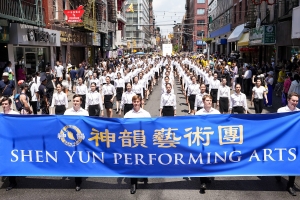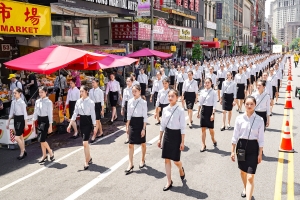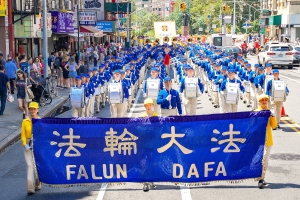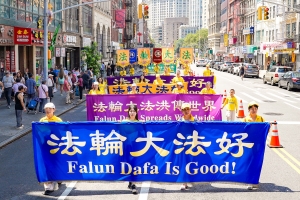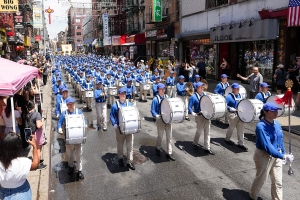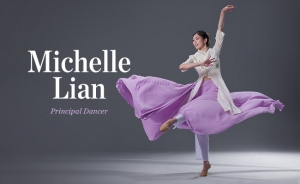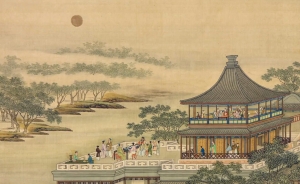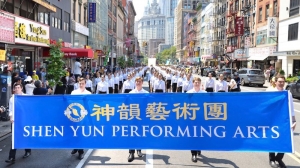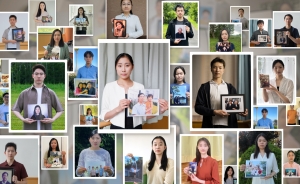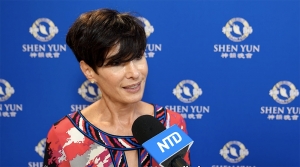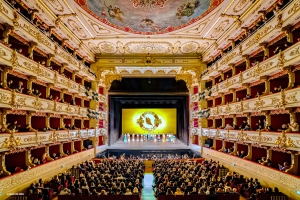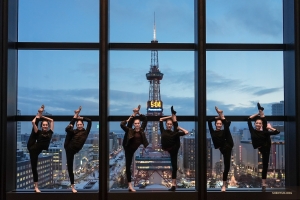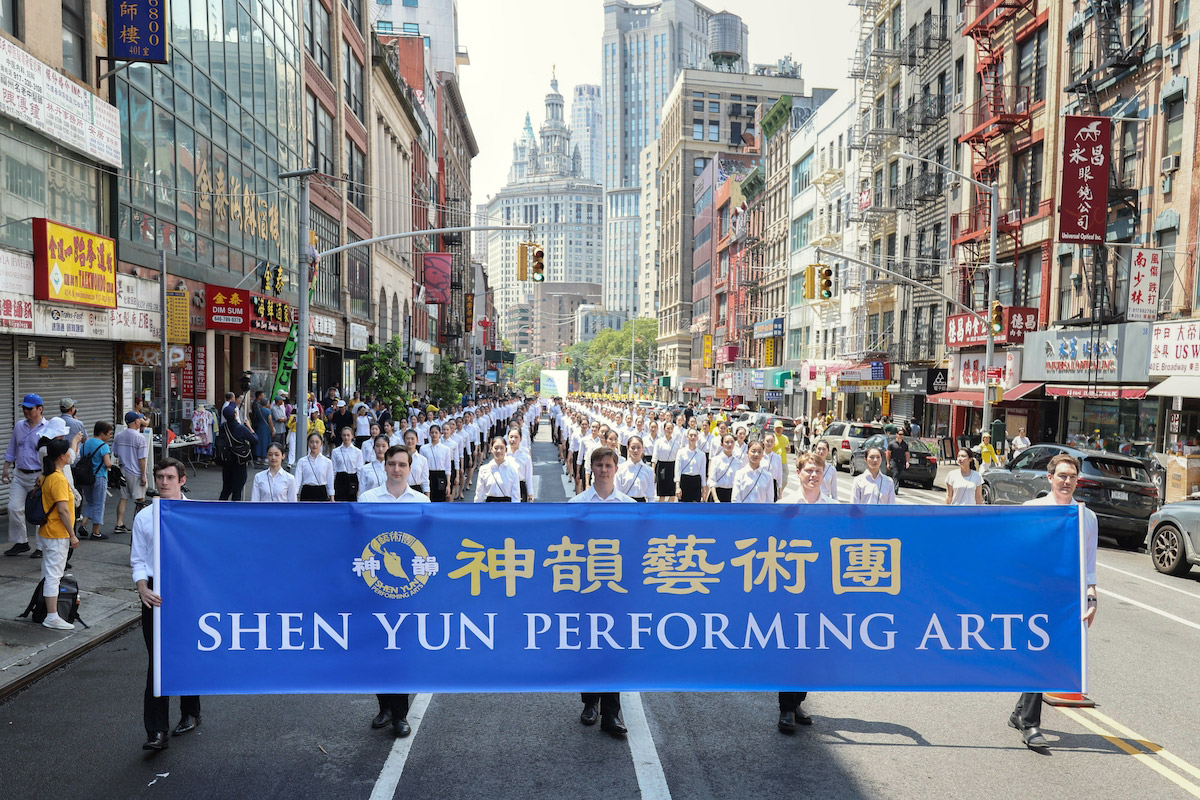
Shen Yun Artists Participate in Parade to Stop Persecution
On July 20, 2025, Shen Yun performers joined thousands of participants in a New York City parade marking 26 years since the persecution of Falun Gong in China began.
This was the first time we participated in such an event, as hundreds of Shen Yun artists marched solemnly in simple, yet elegant attire—with shirts with black pants or skirts.
The parade in Chinatown, one of the oldest Chinese communities in the United States, was a very different kind of public appearance for Shen Yun. In a Shen Yun performance, the curtain opens to reveal celestial scenes, imperial courtyards, and heroic epics, and it’s easy to lose yourself in the magnificence of what China once was.
But the realities of today’s China prompted the need for Shen Yun’s existence.
After fleeing brutal repression in China and witnessing the tragic erosion of a once-great civilization, our founders came together in New York’s Hudson Valley in 2006. Their mission was twofold: to revive traditional Chinese culture and to expose an ongoing human rights crisis.
These artists practice Falun Gong, a meditation discipline rooted in Buddhist tradition. Falun Gong was once extremely popular in China, with an estimated 70-100 million people practicing it in the late 90s. But on July 20, 1999, the Chinese Communist Party (CCP) launched a brutal campaign to eliminate the practice (read about why). This persecution continues today.
For many of us in Shen Yun, this date is not just a historical milestone. It carries the added weight of our own families’ tragedies. Nearly one hundred of Shen Yun’s current members have been directly impacted by this persecution (video).
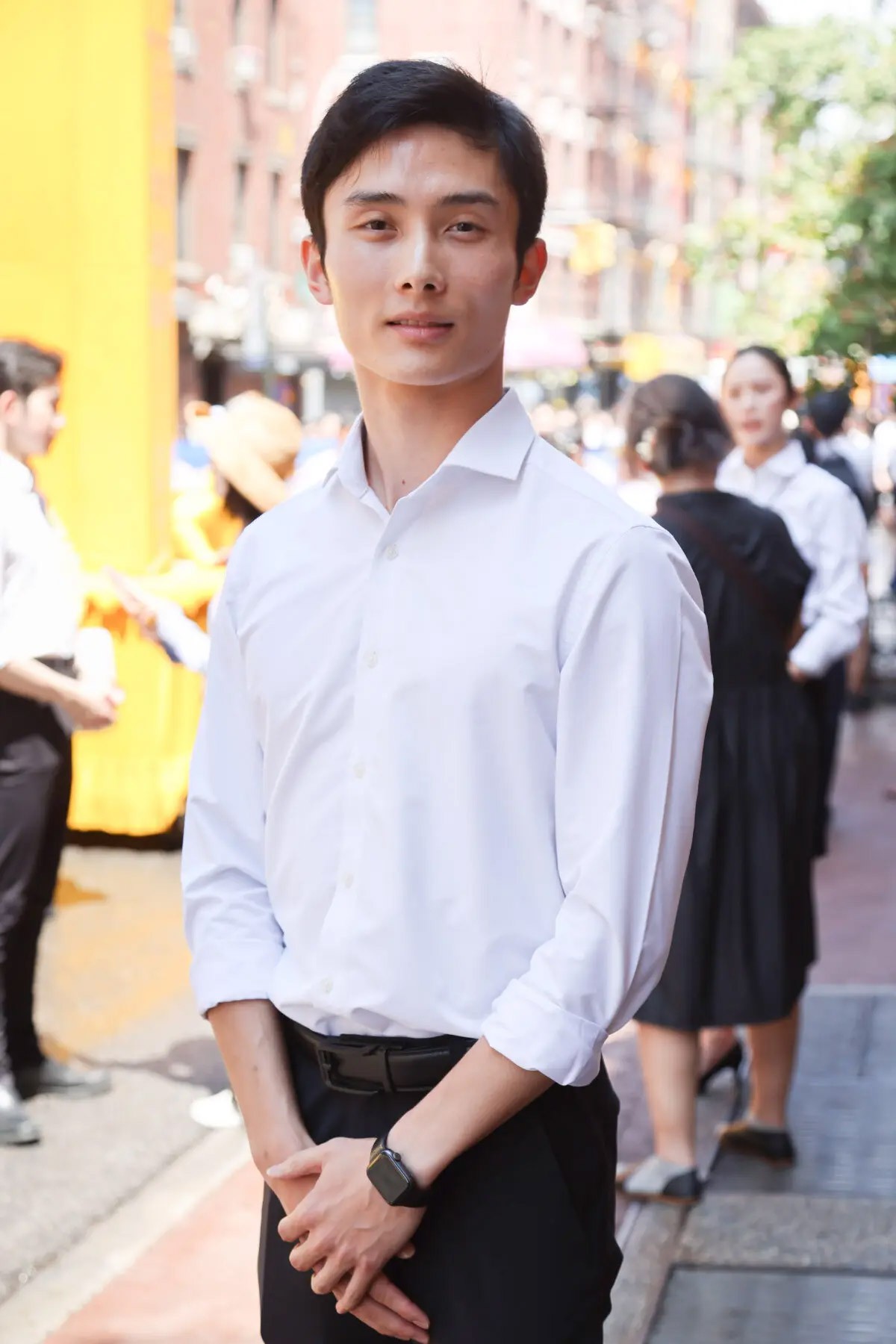
Among those walking in the parade was Hungwei Sun, a Shen Yun principal dancer who was six years old when Chinese police raided his family’s home and arrested his mother for her belief in Falun Gong. Sun’s mother was later sentenced to seven years in prison, leaving his father to care for him and his brother alone. After she was released from prison, police continued to harass the family, trying to force Sun’s mother to sign a statement renouncing her faith. We remembered the countless stories like Sun’s as we walked in the parade.
In Chinatown, Shen Yun artists marched alongside other Falun Gong practitioners who held banners reading, “Stop the Persecution of Falun Gong in China,” or “End 26 Years of Persecution.” Other parade participants handed out flyers with information about the persecution or lotus flowers as a symbol of maintaining purity and hope amidst turbulent times.
Over the years, the reaction in the Chinese community to this annual commemoration has been mixed. Those who have bought into the regime’s propaganda about Falun Gong have harassed or even assaulted practitioners walking in such parades. However, more and more people in the Chinese diaspora have become supportive of Falun Gong after learning about the true nature of the spiritual practice and the persecution believers face in China.
A man watching the parade and who saw Falun Gong’s popularity in China before the persecution, told The Epoch Times, “Look, after 26 years, there are more and more practitioners, and more young practitioners. People know what Falun Gong is about, no matter how much the CCP tries to slander them.”
As we prepare for our upcoming tour, this parade in New York City serves as a reminder of those in China who still face persecution and of our mission to revive the beauty of China before the horrors of communism.
Many watch Shen Yun for the artistry––the choreography, the music, the costumes—and our entire artistic team works hard to make it world-class. But after seeing a performance, many audience members also speak of having a clearer sense of why Shen Yun exists.
With each performance, we strive to preserve a culture nearly lost and give voice to those silenced. Just like the message of hope in the parade, it’s a vision for a future where the best of China’s past can live on––openly, and without fear.


